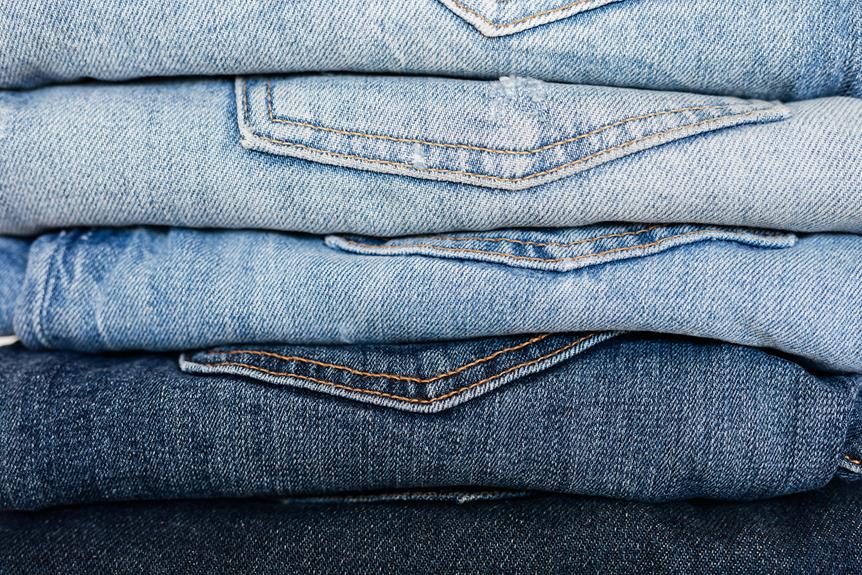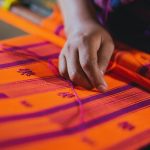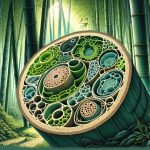When you consider storage solutions, have you thought about how fabric choices can impact the environment? Eco-friendly options like organic cotton and recycled polyester not only provide practical benefits but also enhance your space's aesthetic. By incorporating these materials, you can create a more organized home while making a positive environmental contribution. But what specific types of eco-friendly fabrics should you look for, and how can they transform your storage methods? Exploring these aspects might just reveal innovative ideas you hadn't considered before.
Table of Contents
Key Takeaways
- Choose storage solutions made from eco-friendly fabrics like organic cotton, hemp, or bamboo for sustainable organization.
- Fabric storage options are lightweight, breathable, and mold-resistant, helping to preserve your stored items.
- Incorporate colorful fabric bins or cubes into your decor to store items stylishly while reducing clutter.
- Opt for collapsible designs to save space and enhance functionality in closets or storage areas.
Types of Eco-Friendly Fabrics
What types of eco-friendly fabrics should you consider for your storage solutions?
First up, organic cotton is a fantastic choice. It's grown without harmful pesticides or chemicals, making it safe for you and the environment. Plus, it's durable and breathable, perfect for storing various items.
Next, consider hemp. This fabric is incredibly strong and resistant to mold, making it ideal for long-term storage. Hemp requires less water to grow compared to traditional cotton, which adds to its eco-friendliness.
Another great option is linen, made from flax plants. Linen's natural properties make it hypoallergenic and moisture-wicking, ensuring your stored items stay fresh. It's also biodegradable, which is a bonus for sustainability.
You might also explore bamboo fabric. Bamboo grows rapidly and doesn't require fertilizers, making it a resource-efficient option. Its silky texture adds a touch of luxury to your storage solutions.
Lastly, look into recycled polyester. This fabric repurposes plastic waste, reducing landfill contributions while providing a sturdy material for storage solutions.
Choosing any of these fabrics won't only benefit your storage needs but also support eco-conscious living.
Benefits of Fabric Storage
Fabric storage solutions offer a lightweight and versatile way to keep your belongings organized while enhancing your home's aesthetic. You'll appreciate how these solutions come in various styles, colors, and patterns, allowing you to express your personality while maintaining order. Unlike bulky alternatives, fabric storage is easy to move around, so you can rearrange your space as needed.
One major benefit of fabric storage is its eco-friendliness. Many fabric options are made from sustainable materials, reducing your carbon footprint. Additionally, fabric storage can be more breathable than plastic containers, which helps prevent mold and mildew, keeping your items in better condition.
Another advantage is the cost-effectiveness of fabric storage solutions. They're often more affordable than traditional storage options, meaning you can invest in multiple pieces without breaking the bank. You'll also find that fabric storage solutions are often collapsible, making them easy to store when not in use.
Creative Storage Ideas
Explore innovative ways to utilize fabric storage solutions that not only keep your space tidy but also enhance your home's decor. Start by incorporating colorful fabric bins or baskets into your living room or bedroom. These stylish containers can hold everything from toys to blankets, adding a pop of color while keeping clutter at bay.
Consider using fabric storage cubes that double as seating. Place them in your entryway or at the foot of your bed for extra storage and practicality. You can also hang fabric wall organizers in your kitchen or office. They're perfect for storing mail, utensils, or craft supplies while freeing up valuable counter space.
If you love plants, try fabric planters for a touch of greenery. They not only serve as unique decor but also provide excellent drainage for your plants. For seasonal items like winter clothes or holiday decorations, use breathable fabric storage bags. They keep your belongings protected while easily fitting under beds or in closets.
Lastly, personalize your storage solutions with fabric scraps or paint to match your decor. This way, you create a cohesive look that's both functional and visually appealing.
Tips for Sustainable Organization
How can you transform your organizing habits into more sustainable practices?
Start by evaluating what you already own. Before you buy new storage solutions, declutter and repurpose items you no longer use. This not only reduces waste but also creates a cleaner space.
Next, focus on using eco-friendly materials. Opt for storage containers made from sustainable resources, like bamboo or recycled plastic. These materials aren't only durable but also less harmful to the environment. You can also make your own fabric storage solutions using old clothes or linens, giving them a second life.
When organizing, think about functionality. Assign specific homes for your items to minimize clutter and avoid unnecessary purchases. Use labels made from biodegradable materials to help you keep track of everything without adding to plastic waste.
Lastly, consider the lifecycle of your organizing solutions. Aim for items that are reusable, recyclable, or compostable. By prioritizing sustainability in your organizing practices, you'll not only create a more efficient space but also contribute positively to the planet.
Where to Buy Eco-Friendly Options
Finding eco-friendly storage solutions is easier than ever, with numerous retailers offering sustainable options that align with your organizing goals.
Whether you're looking for fabric bins, baskets, or bags, you can find a variety of choices that not only look great but also minimize your environmental impact.
Here are a few places to start your search for eco-friendly storage options:
- Local Craft Stores: Many local shops offer handmade storage solutions crafted from organic materials or recycled fabrics. Supporting local artisans is a bonus!
- Online Marketplaces: Websites like Etsy feature numerous sellers who specialize in eco-conscious products, giving you a wide range of unique and customizable options.
Frequently Asked Questions
Are Eco-Friendly Fabrics Hypoallergenic and Safe for Sensitive Skin?
Yes, eco-friendly fabrics can be hypoallergenic and safe for sensitive skin. They often use natural fibers and non-toxic dyes, reducing irritation risk. Always check labels to ensure you're choosing the right materials for your needs.
How Do I Clean and Maintain Eco-Friendly Fabric Storage Solutions?
To clean and maintain your fabric storage solutions, you should regularly dust them, spot-clean stains with mild soap and water, and avoid harsh chemicals. Always check care labels for specific cleaning instructions to preserve their quality.
Can Eco-Friendly Fabrics Withstand High Humidity and Temperature Changes?
Yes, eco-friendly fabrics can withstand high humidity and temperature changes, but their durability depends on the specific material. You should choose fabrics designed for such conditions to ensure they last and maintain their integrity.
What Is the Lifespan of Eco-Friendly Fabric Storage Products?
The lifespan of eco-friendly fabric storage products varies based on materials and usage. Generally, with proper care, you can expect them to last several years, providing durability while being kind to the environment.
Are There Any Certifications for Eco-Friendly Fabric Storage Options?
Yes, there are certifications for eco-friendly fabric storage options. Look for labels like GOTS, OEKO-TEX, or Fair Trade. These certifications ensure the products meet strict environmental and social standards, giving you peace of mind with your choices.
- How Does Ring Spun Cotton Affect Garment Fit and Shape Retention? - August 13, 2024
- What Are the Challenges in Producing Ring Spun Cotton? - August 13, 2024
- Is Ring Spun Cotton Suitable for Plus-Size Clothing? - August 13, 2024







